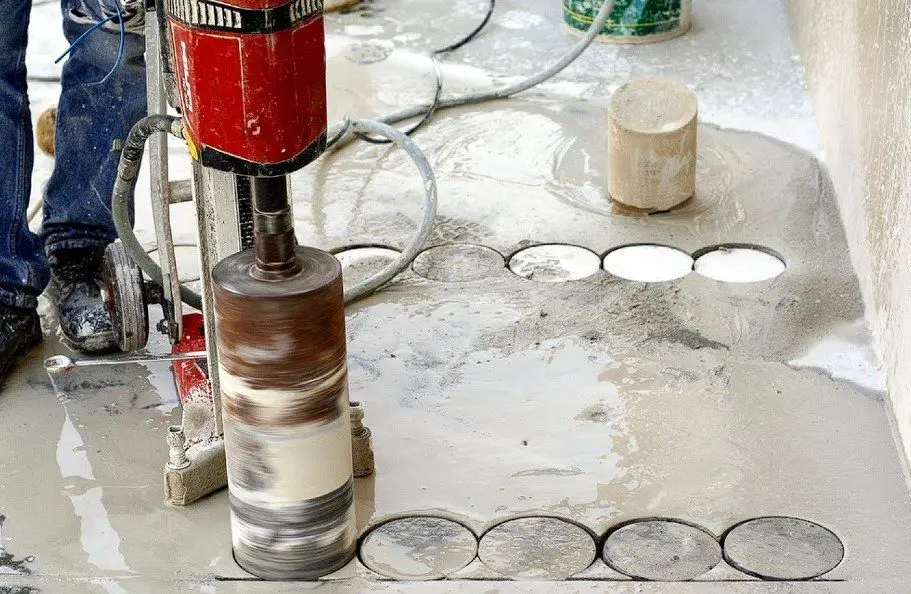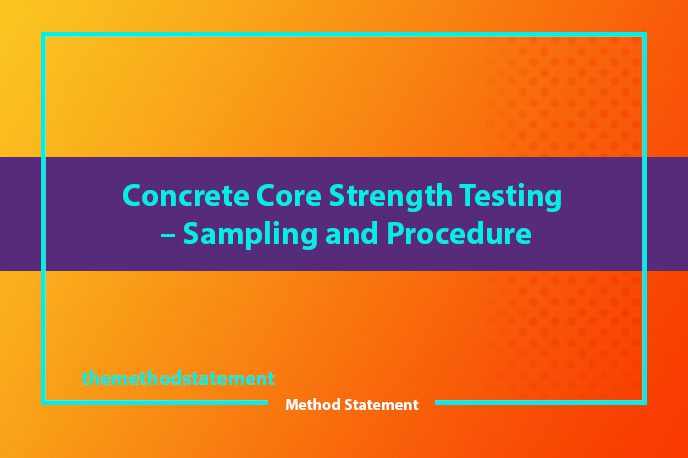Sampling and Procedure for Concrete Core Strength Testing
In accordance with ASTM Standard C 42, testing of concrete cores is carried out. The procedure for the core sample and strength determination using a concrete core is presented.
Concrete core strength testing is a critical procedure to determine the strength of a concrete structure. However, the process of obtaining core samples for testing must be carried out with caution, as there are risks and hazards associated with concrete coring and cutting.
ASTM Standard C 42 outlines the appropriate procedure for core sampling and strength determination, emphasizing the need for safety measures during the process.
Concrete Core Testing for Strength
The diameter of core specimens for the determination of concrete compressive strength is preferred to be at least three times the nominal maximum size of the coarse aggregate used in the concrete and must be at least twice the maximum size of the coarse aggregate in the core sample.
When capped, the length of the specimen should be roughly double its diameter. A core must be rejected if its maximum height is less than 95% of its diameter before capping or less than its diameter after capping. It is advisable to test the cores when they are moist.
The ASTM standard specifies the following procedure: “Immediately prior to performing the compression test, immerse the test specimens in lime-saturated water at 23.0 +/- 1.7° C for at least 40 hours.” After removal from water storage, test the specimens right away. Keep the specimens damp between removal from water storage and testing by covering them with a wet blanket of burlap or other suitable absorbent fabric.”
If the length-to-diameter ratio of the specimen is less than 1.94, use the adjustment factors provided in Table 1.
Correction Factor for Cone Length to Diameter Ratio
| Ratio of length of cylinder to diameter (L/D) | Strength correction factor |
| 1.75 | 0.98 |
| 1.50 | 0.96 |
| 1.25 | 0.93 |
| 1.00 | 0.87 |

ASTM C 42 specifies the processes for appropriately removing concrete samples via core drilling. When cores are to be tested for strength, they must be taken using diamond-studded core bits.
When the core is drilled vertically, a shot drill may be suitable for additional uses. Diamond-studded core bits, on the other hand, are recommended for various drill orientations.
In core sampling, the following rules are especially important:
- The number, size, and location of core samples should be carefully chosen to provide for all required laboratory tests. If possible, utilize fresh samples for all tests to ensure that previous tests had no influence.
- For strength determination, the core must have a minimum diameter of three times the maximum nominal size of the coarse aggregate, or 50 mm.
- For strength tests, the cores must be at least twice their diameter in length.
- Reinforcing steel should not be included in a core that is being tested for strength.
- Electrical conduits and prestressing steel must not be disturbed during drilling cores.
- It is preferable to drill the core through the entire depth of the member to avoid fracturing it for extraction. A 50 mm additional hole is routinely bored to accommodate for any damage at the core’s base.
- For strength determination, at least three cores must be extracted from each location in the building.
Packaged repair material is used to plug the hole bored to accept the core. A thixotropic material is necessary for slab restoration since it must not collapse under gravity. In rare circumstances, a precast concrete cylinder may be installed in the core hole using cement grout or epoxy resin.
The minimum core diameter is typically 100 mm, but 75 mm and 50mm diameters may be employed in exceptional circumstances. To get the same accuracy, the number of 50 mm diameter cores must be three times that of 100 mm diameter cores. The top 20% of the member, with a minimum of 50 mm and a maximum of 300 mm, and a side cover of 50 mm within the member, are preferably not included in the area of the core to be tested.
Dimensions, density, shape, information on whether aggregates appear to be well-graded or gap-graded, the position of any cracks, damage due to drilling, and the presence of steel must all be recorded prior to testing the cores.
Ends are prepared using diamond-faced grinding wheels in a high-speed wet grinding process. Otherwise, capping may be carried out using strong materials. A 40-hour soak in water is recommended prior to testing.
Moreover
According to British standard CSTR No. 11, the effect of the core’s length-to-diameter ratio (R) on strength is as follows:
For horizontally drilled cores, use the following formula:
Corrected cylinder strength = core strength x[(2.5×0.8)/(1+(1/R)]
For vertically drilled cores:
Corrected cylinder strength = Core strength x[(2.3×0.8)/(1+(1/R)]

